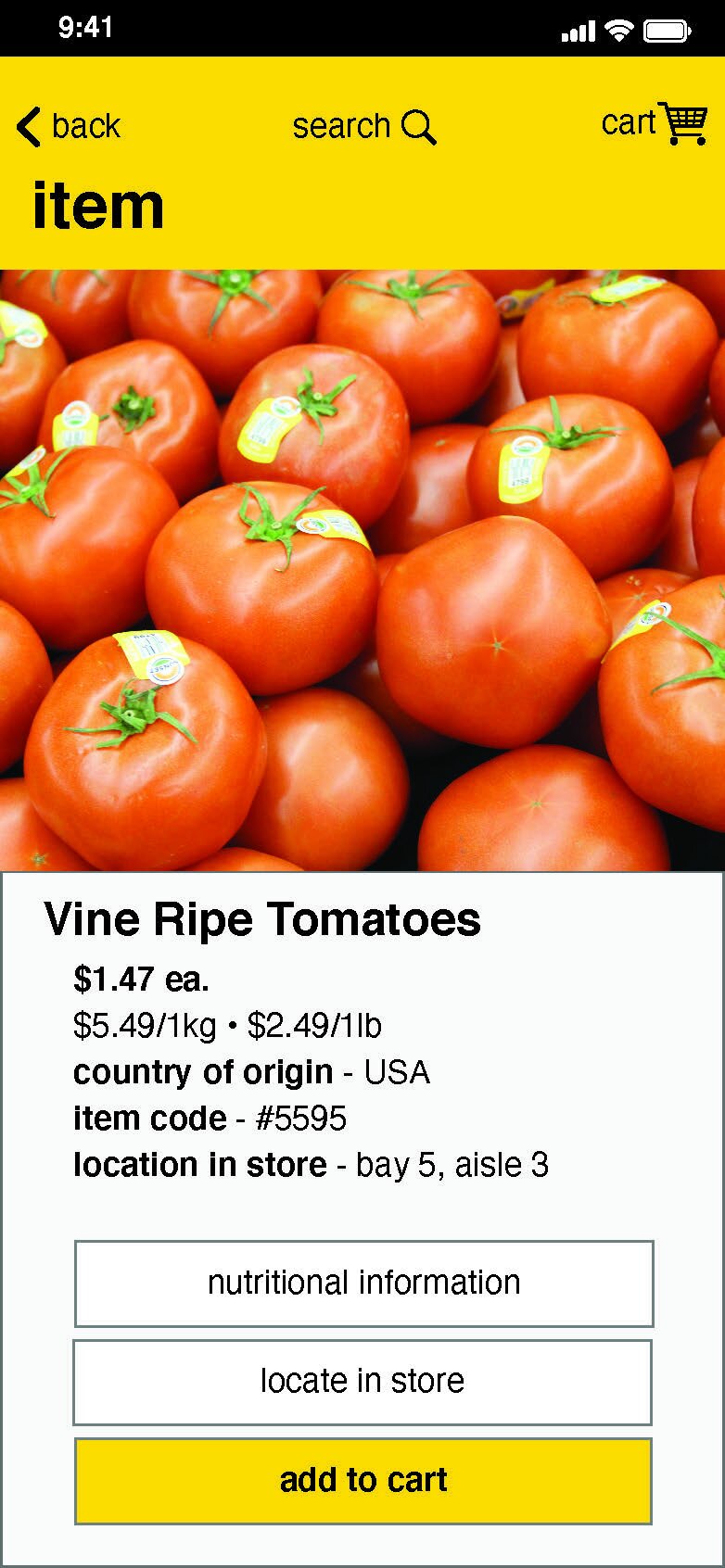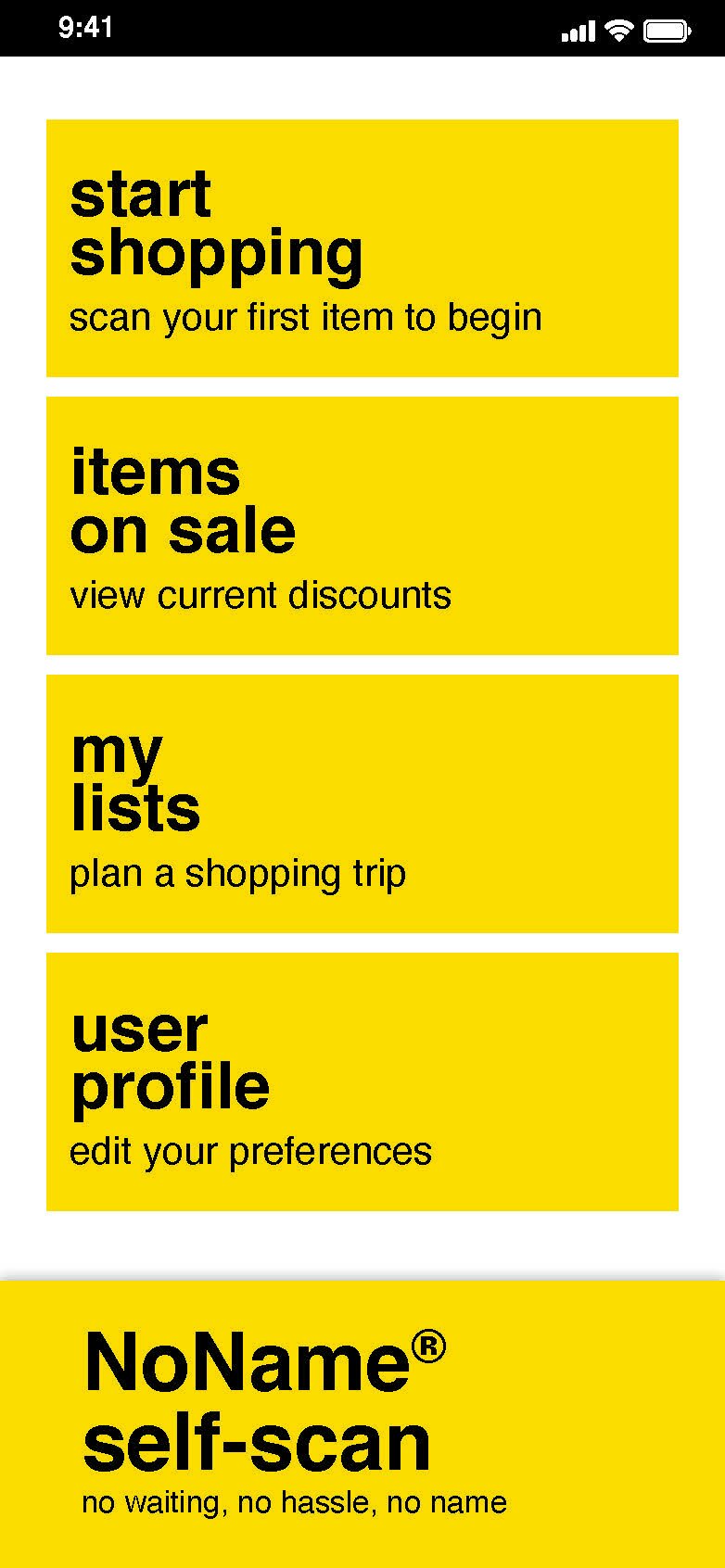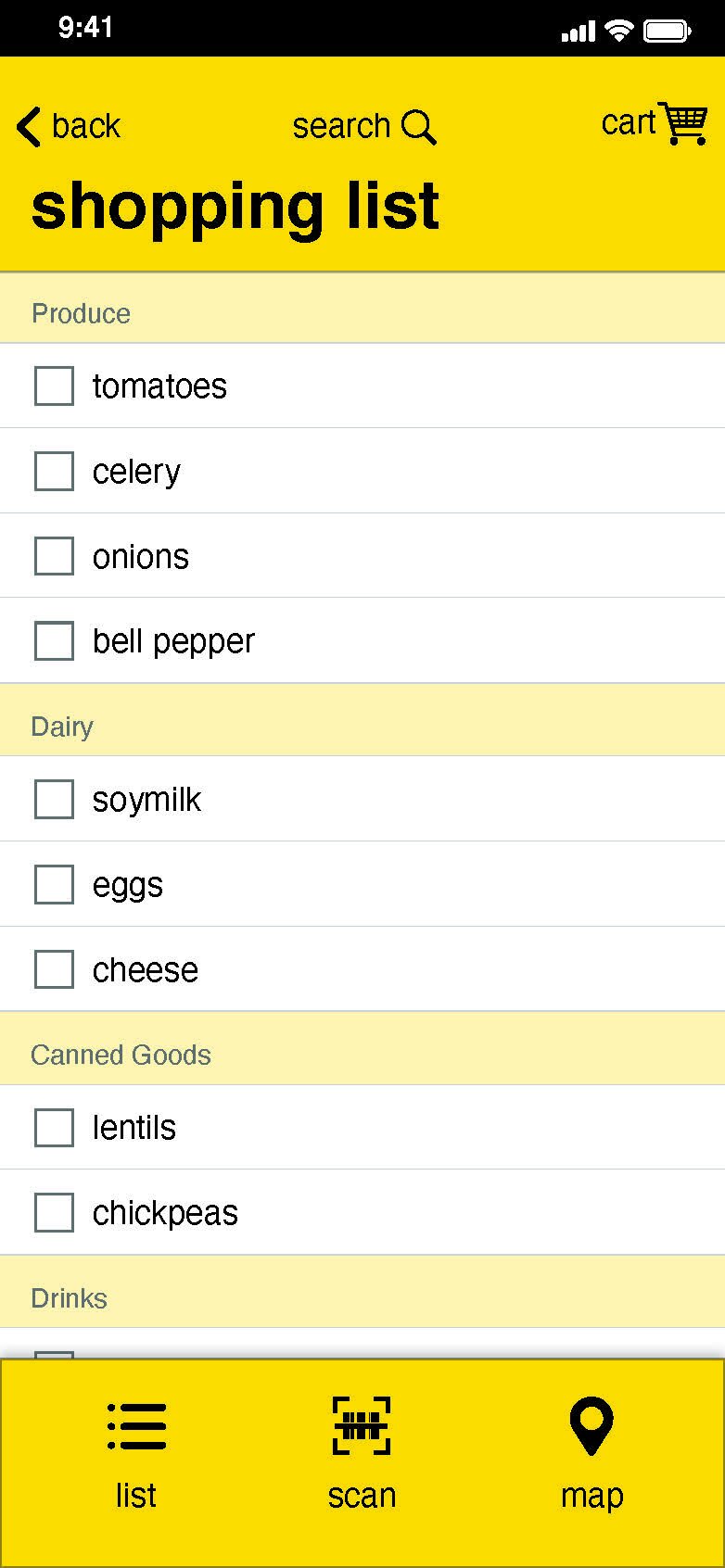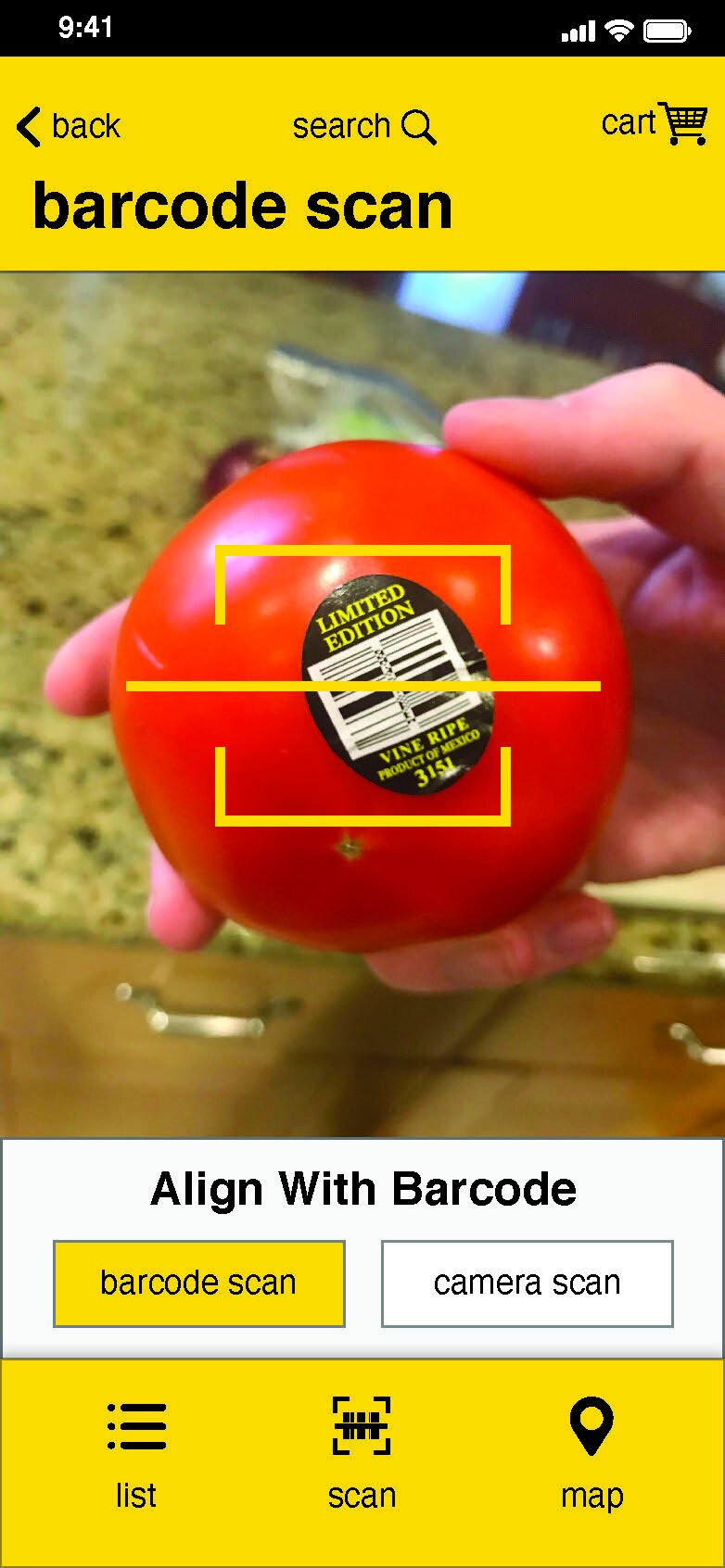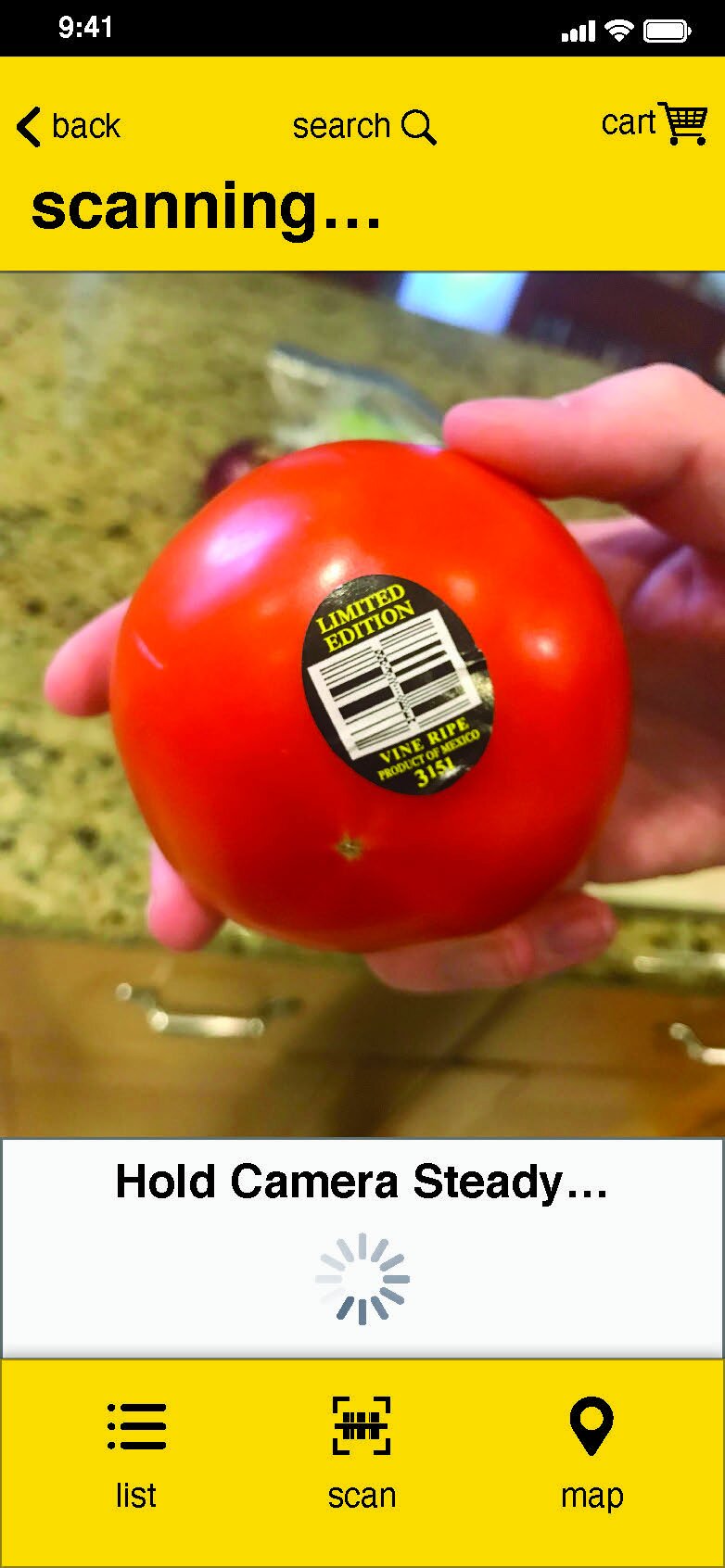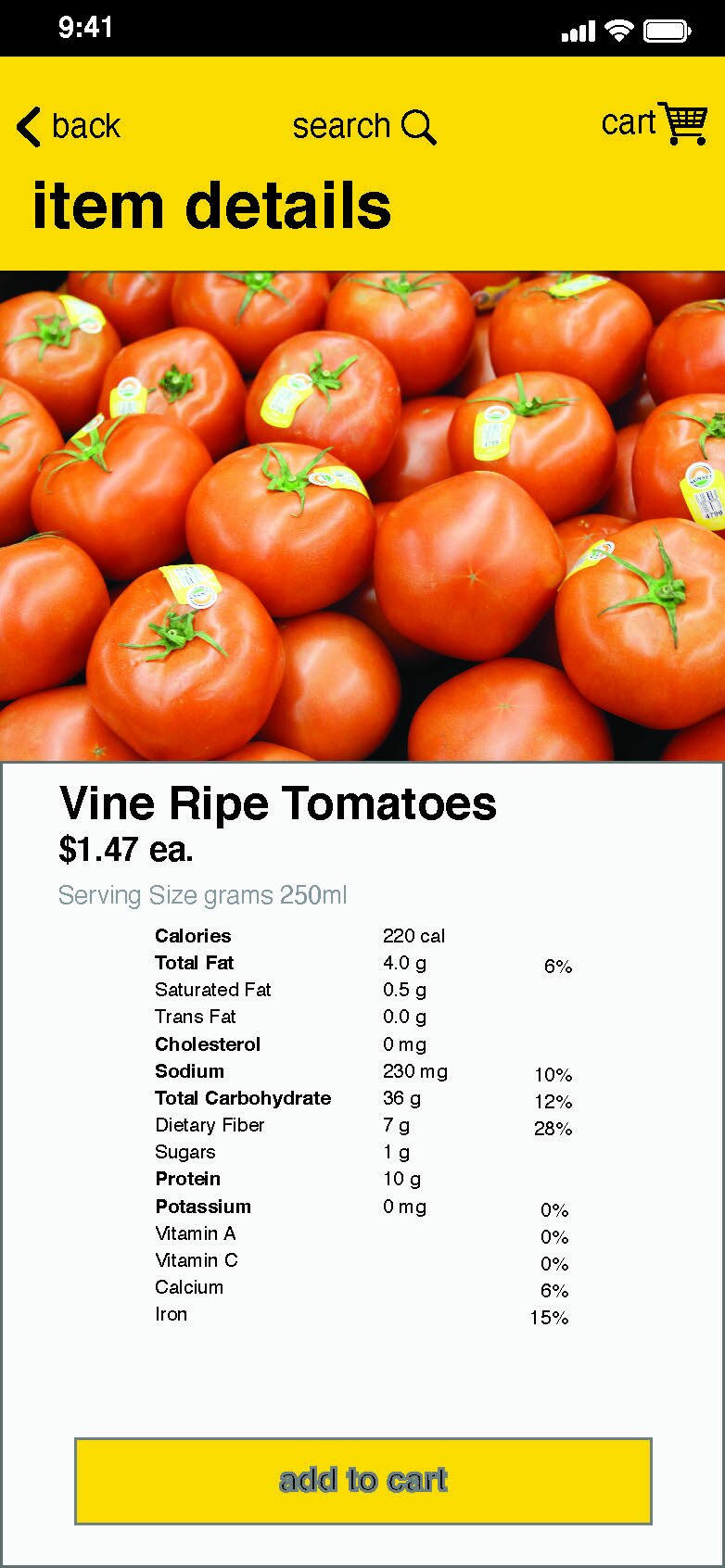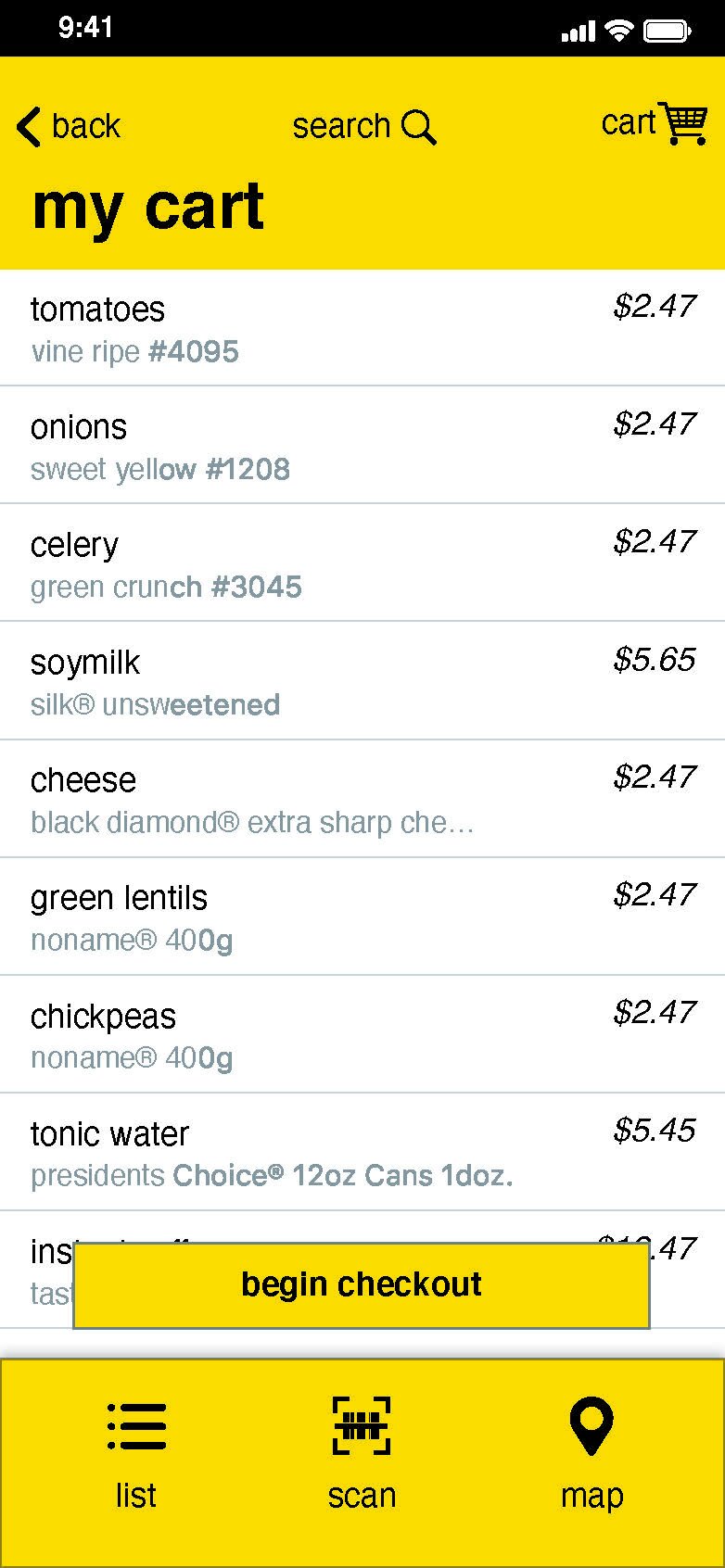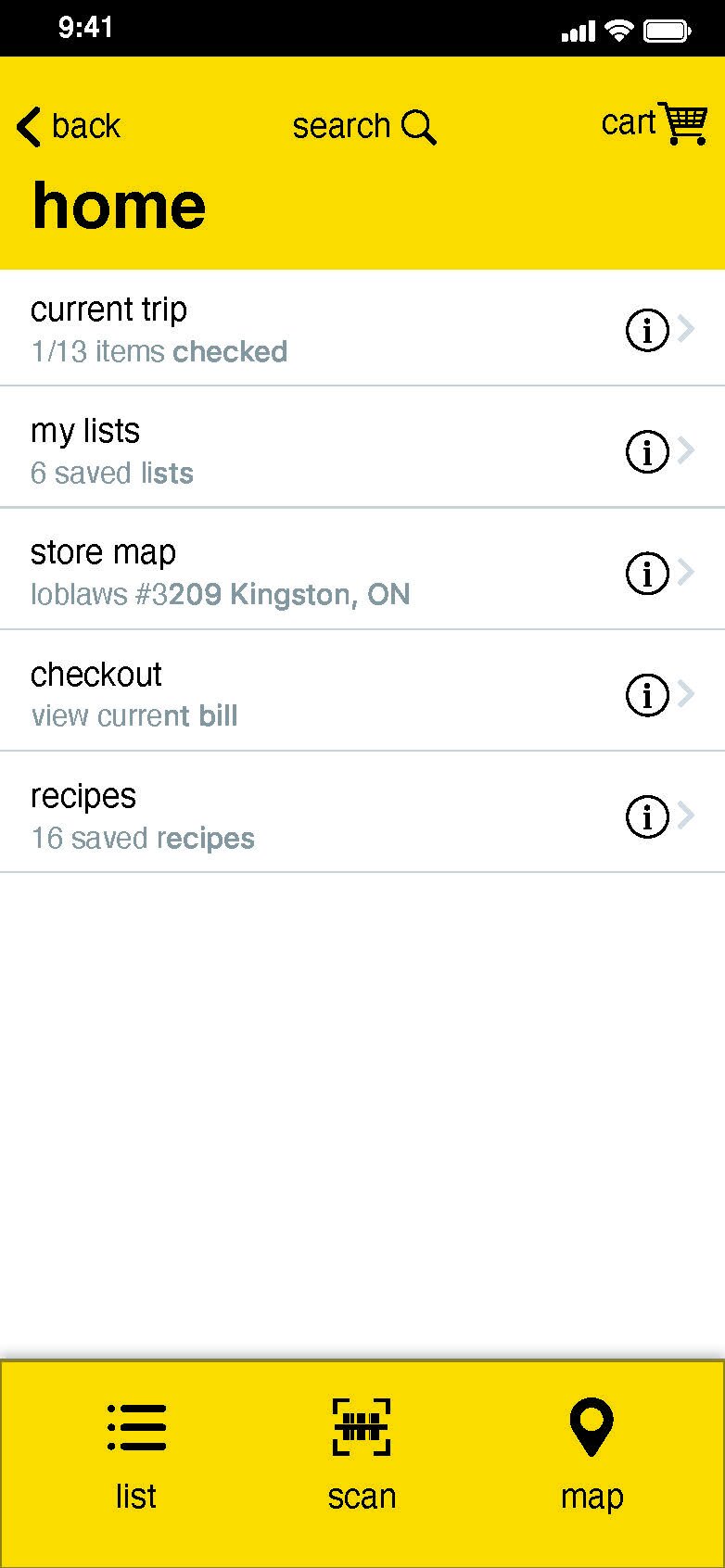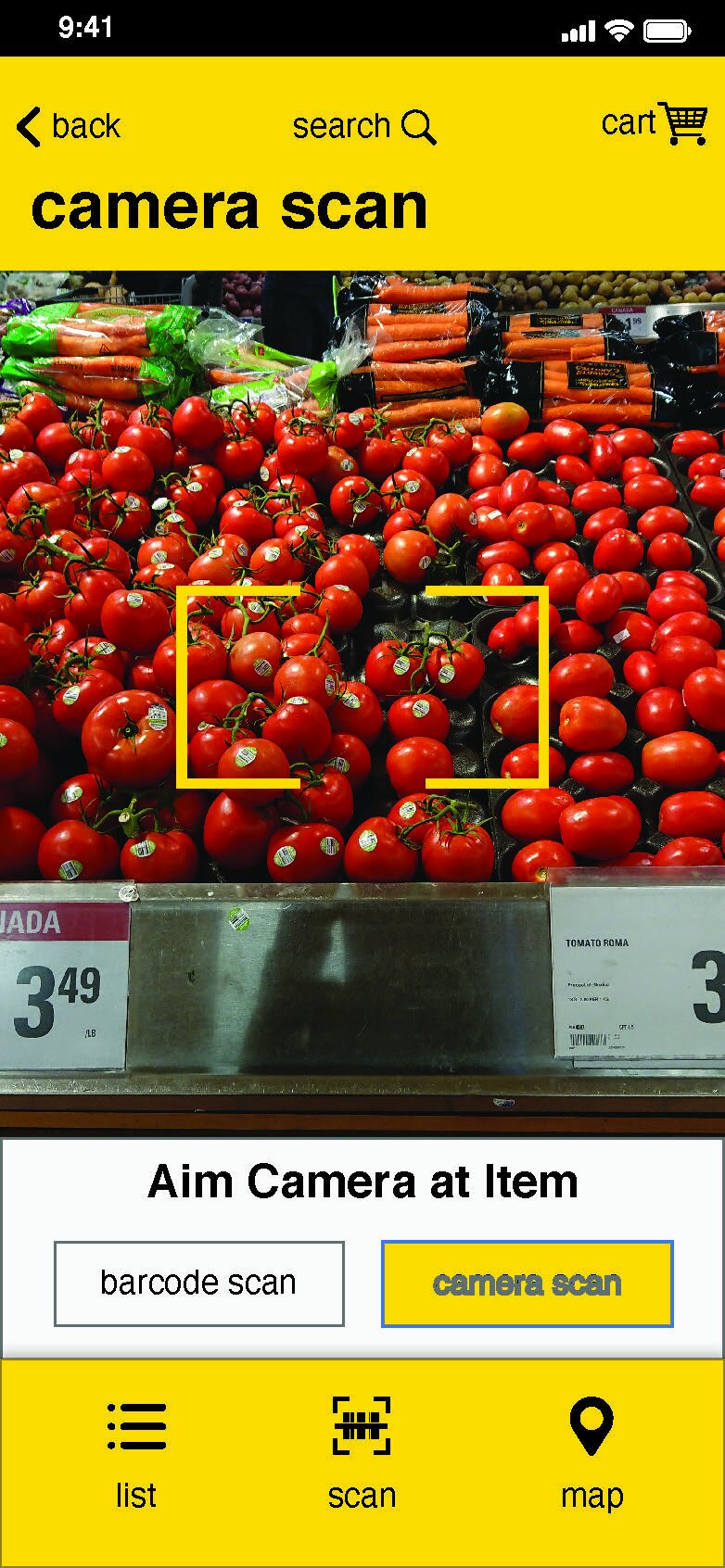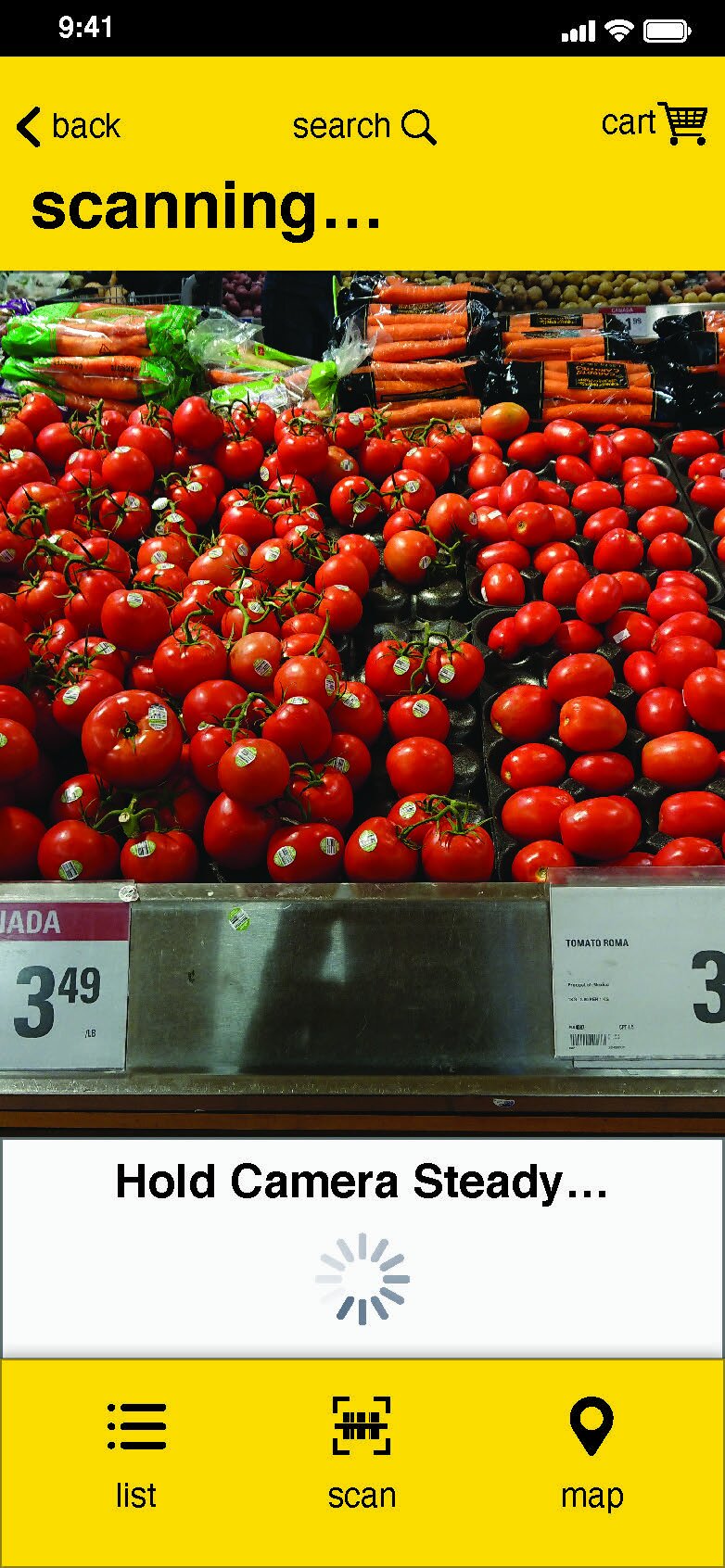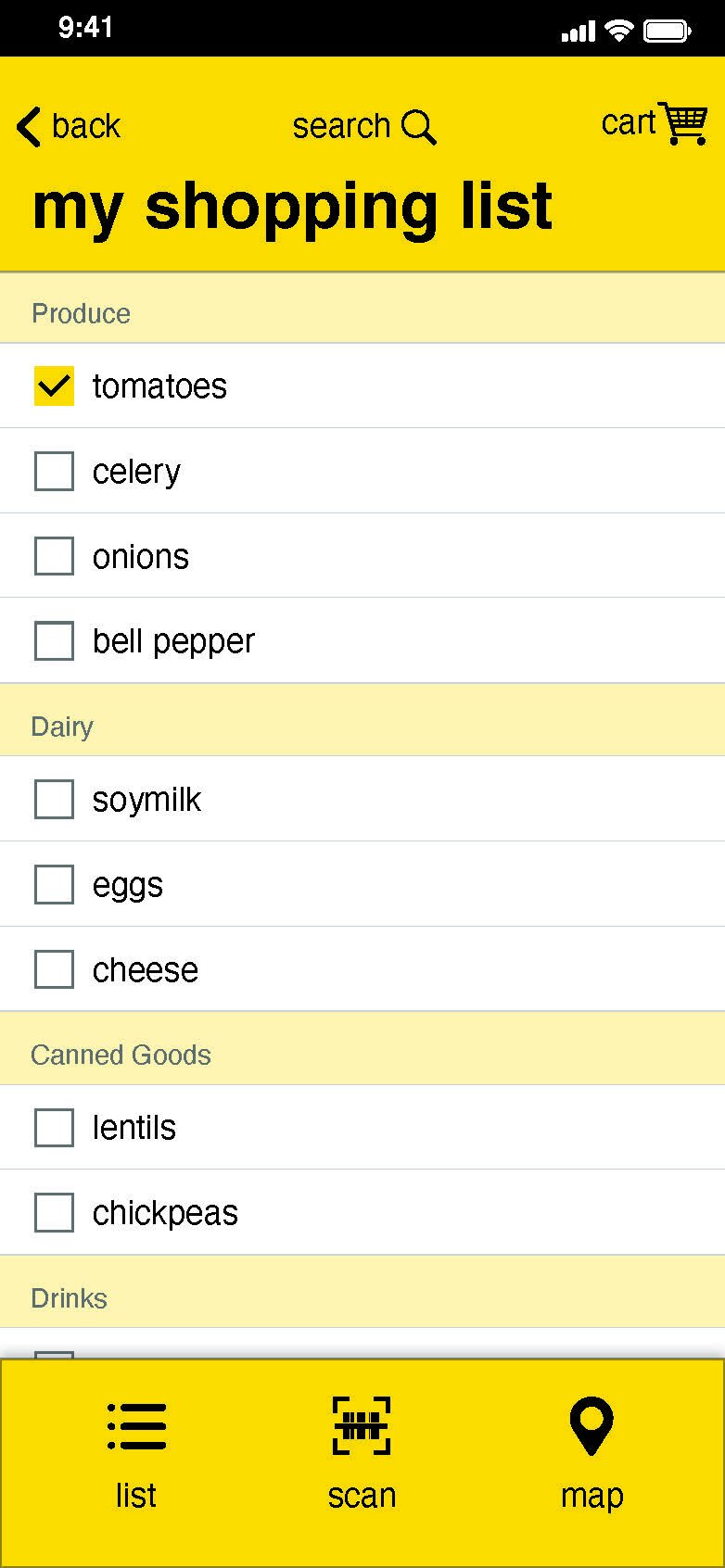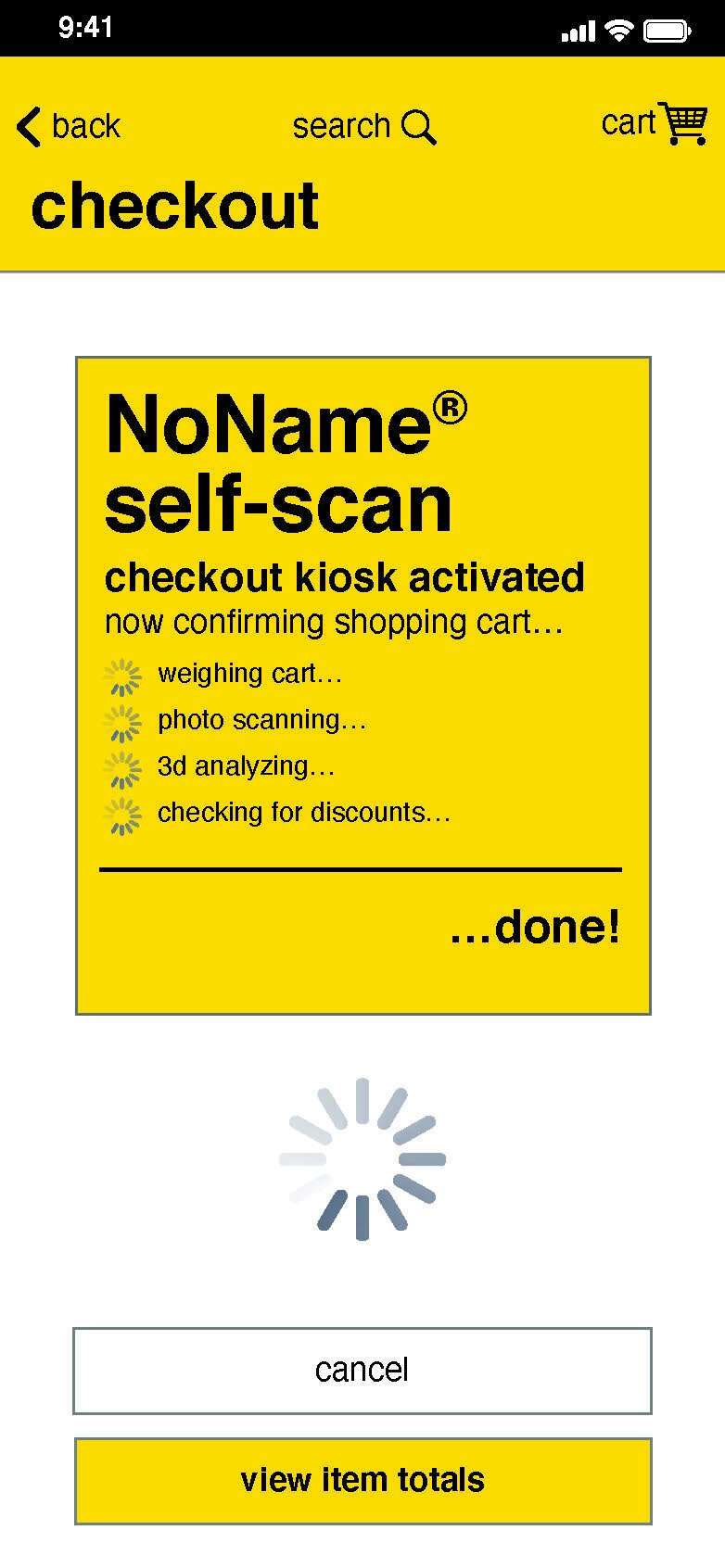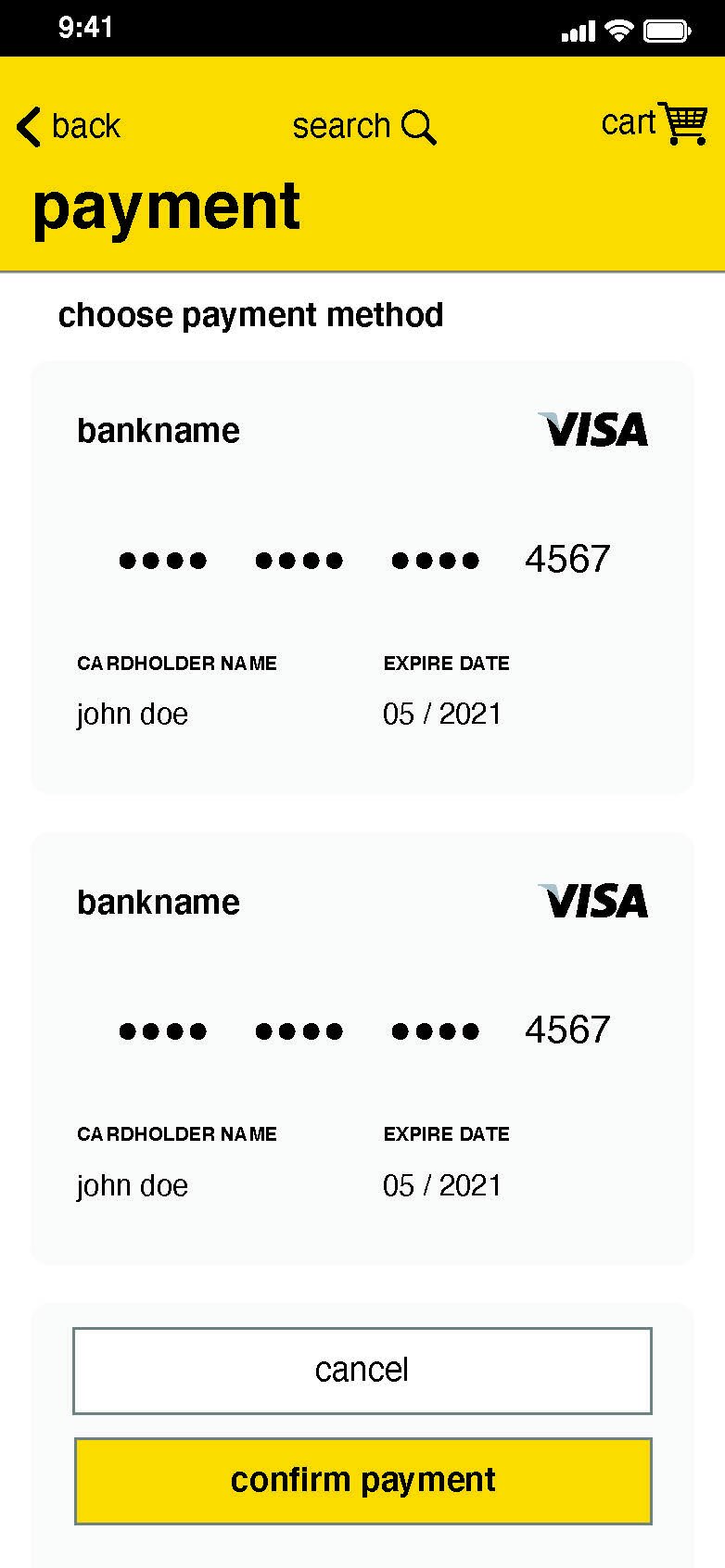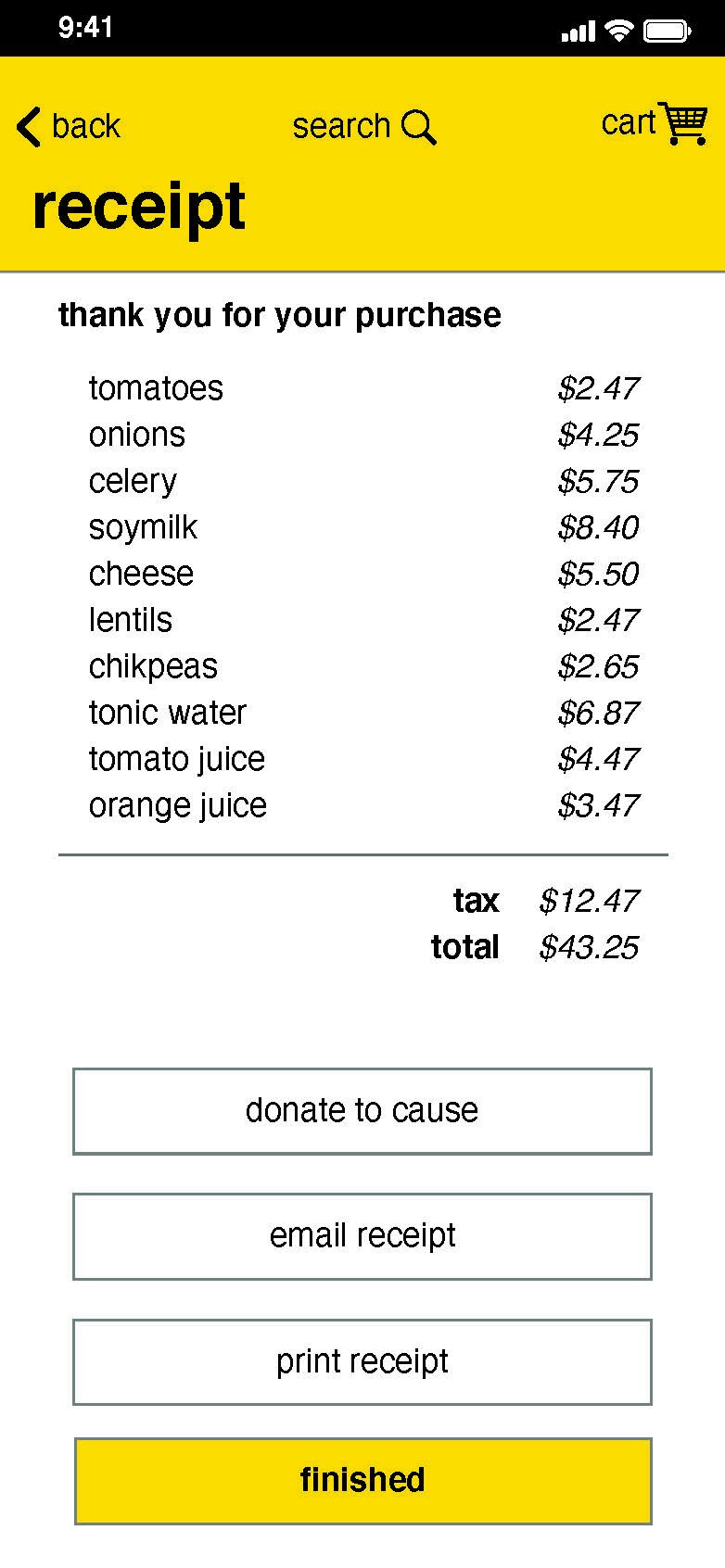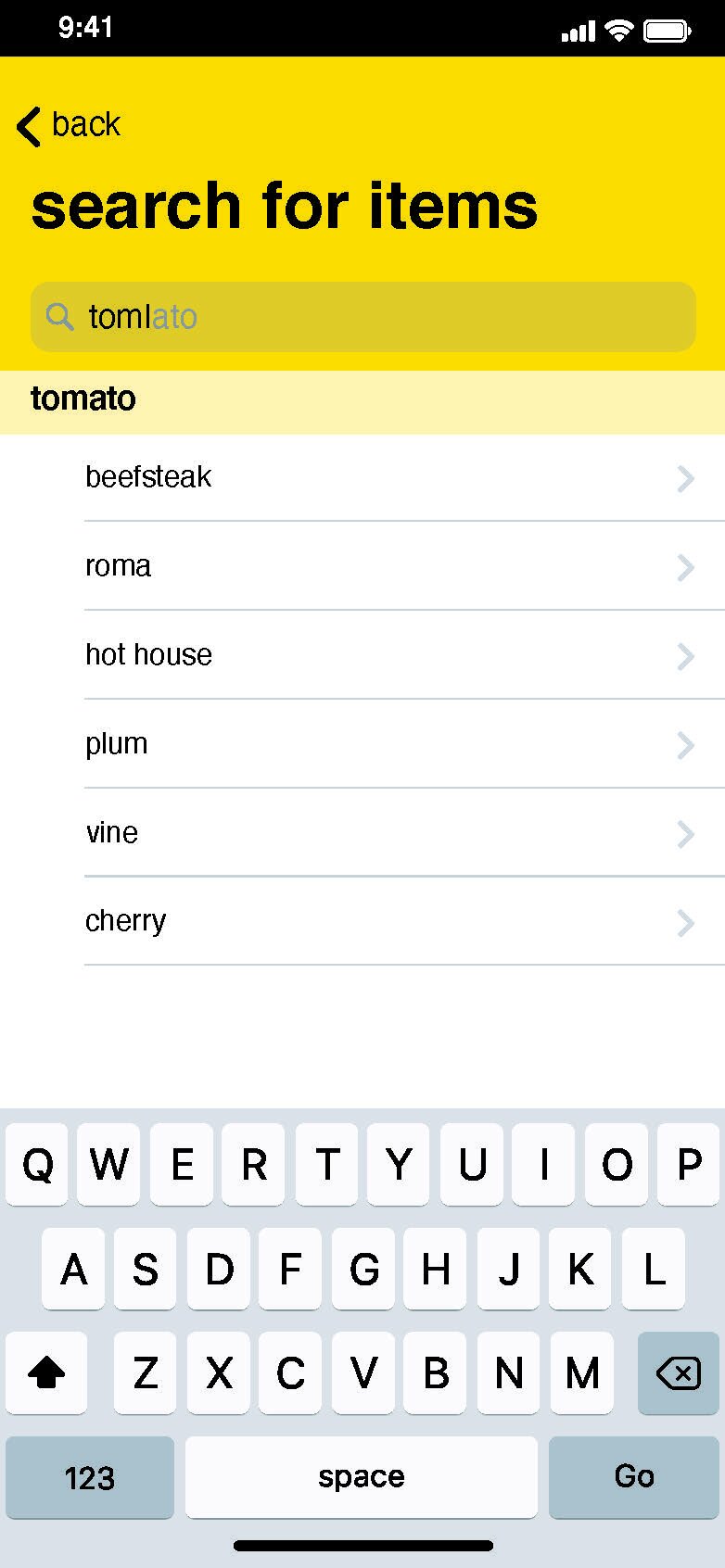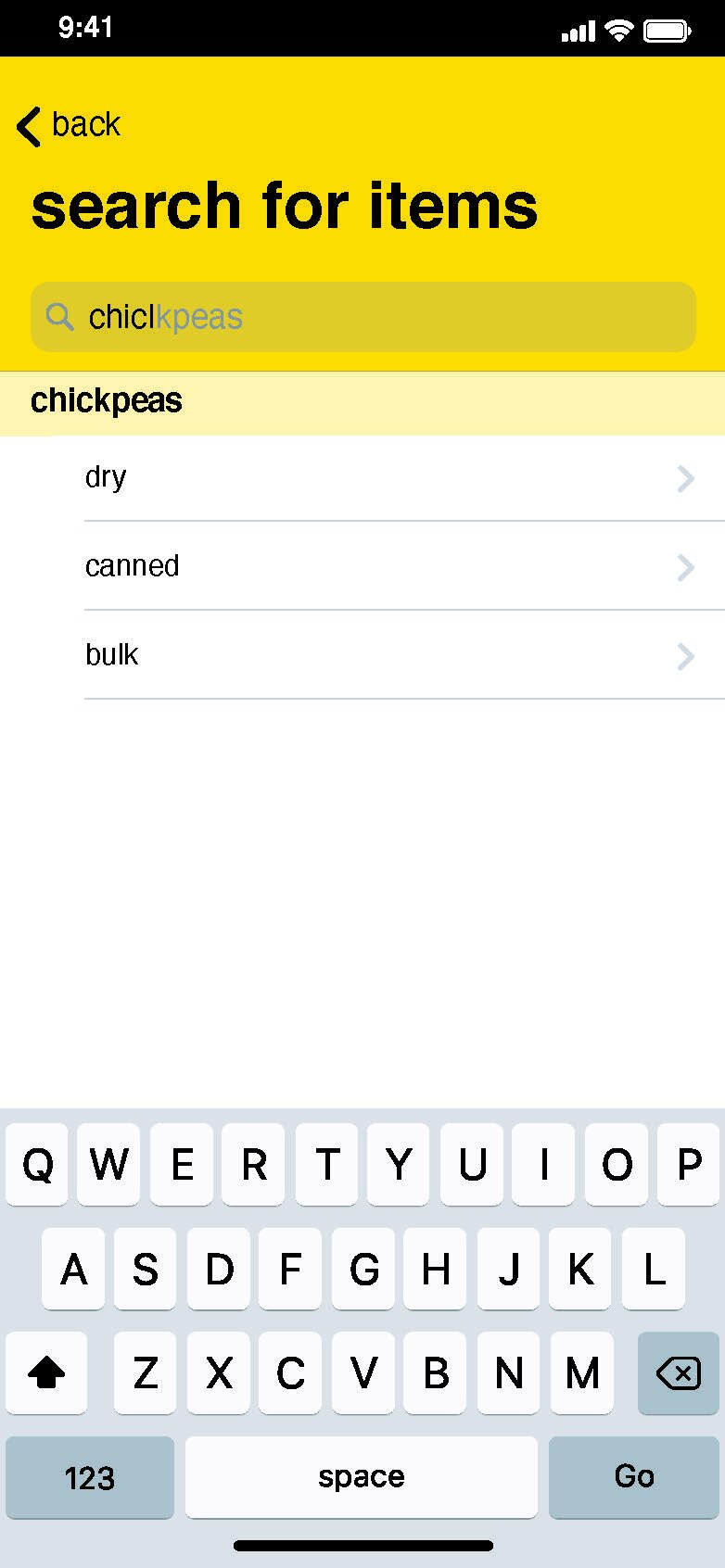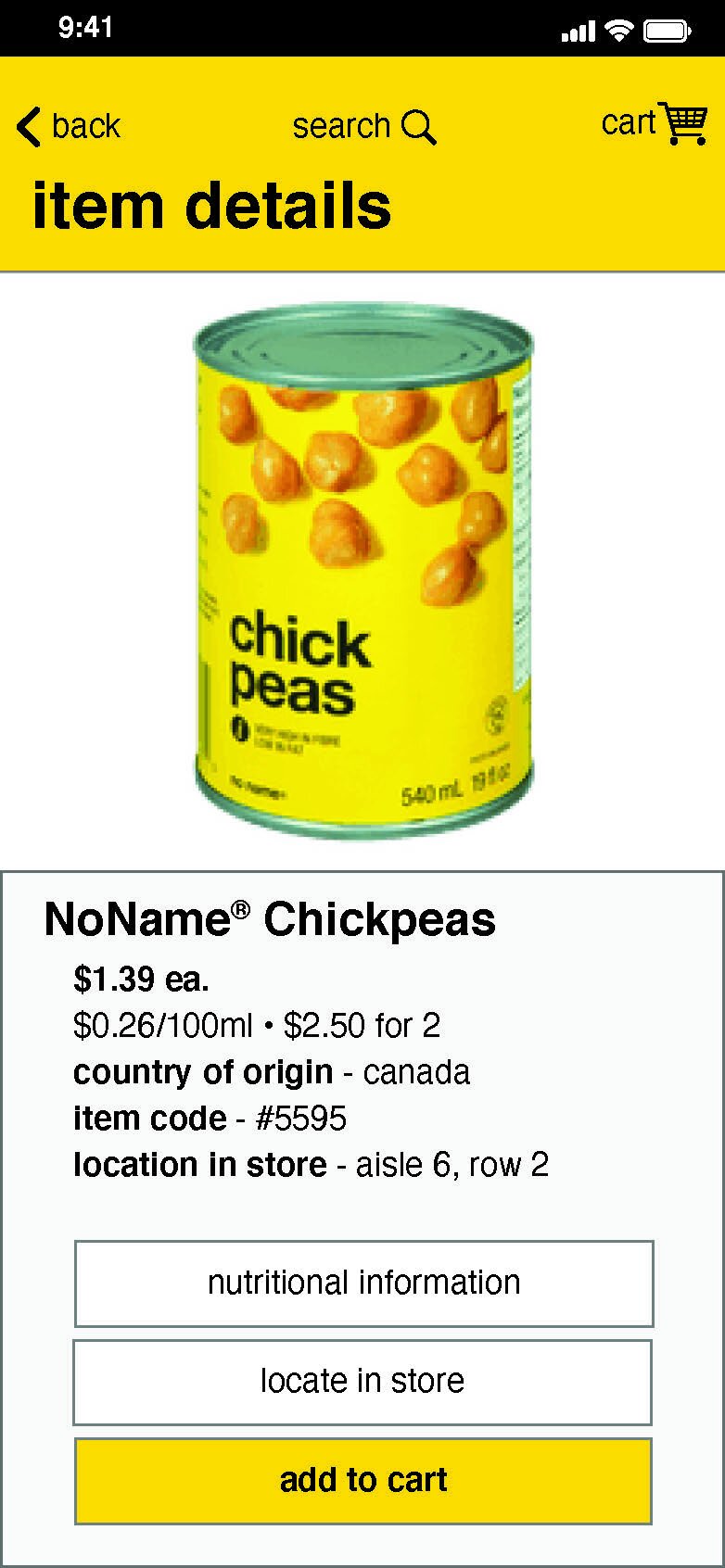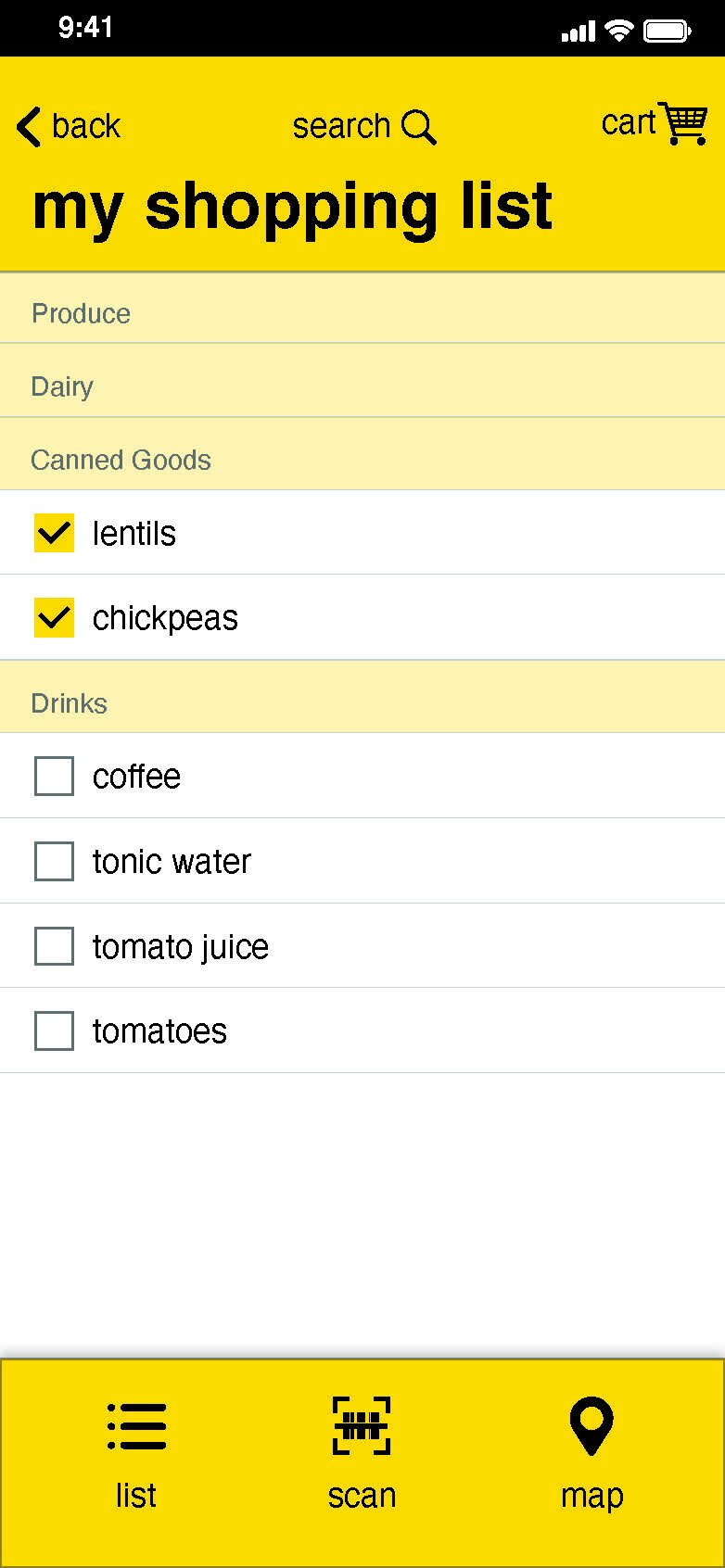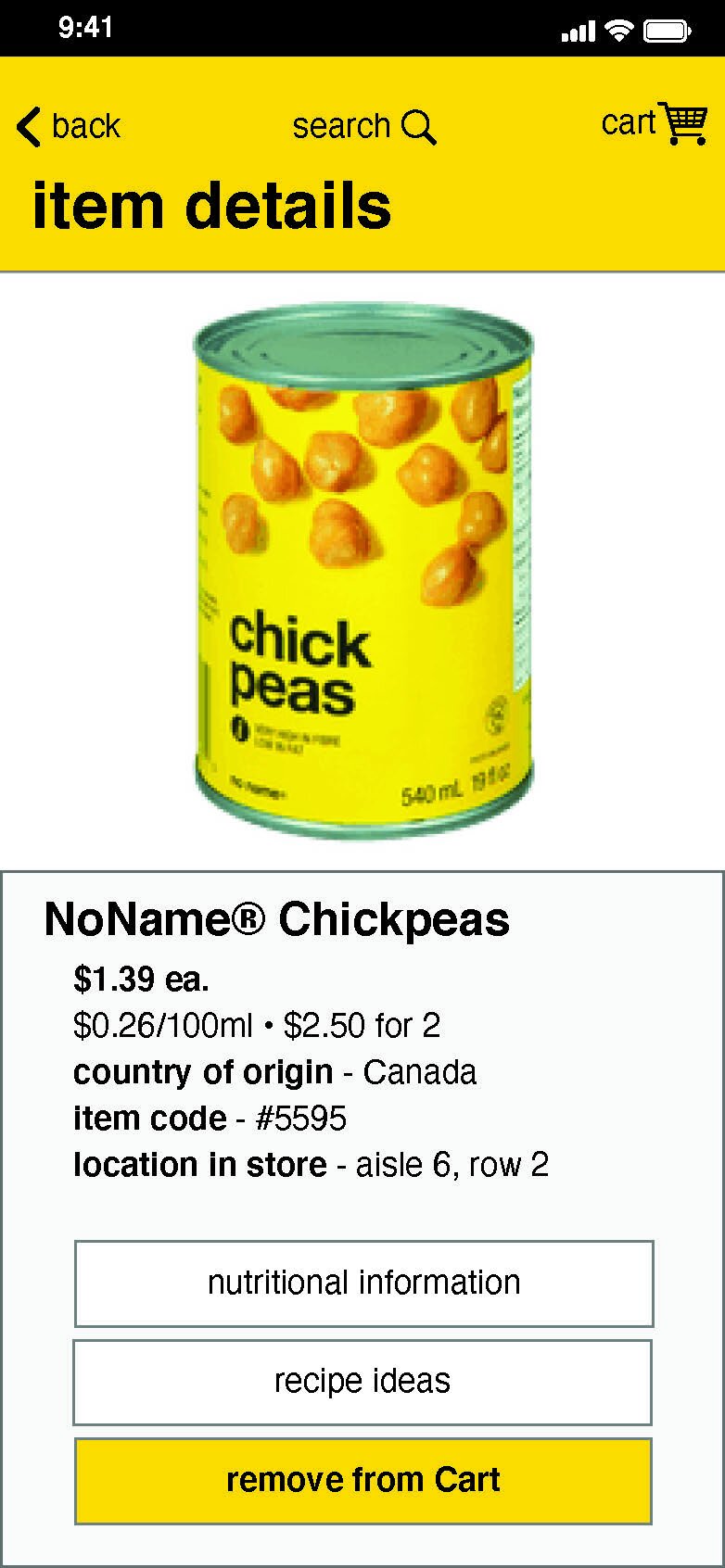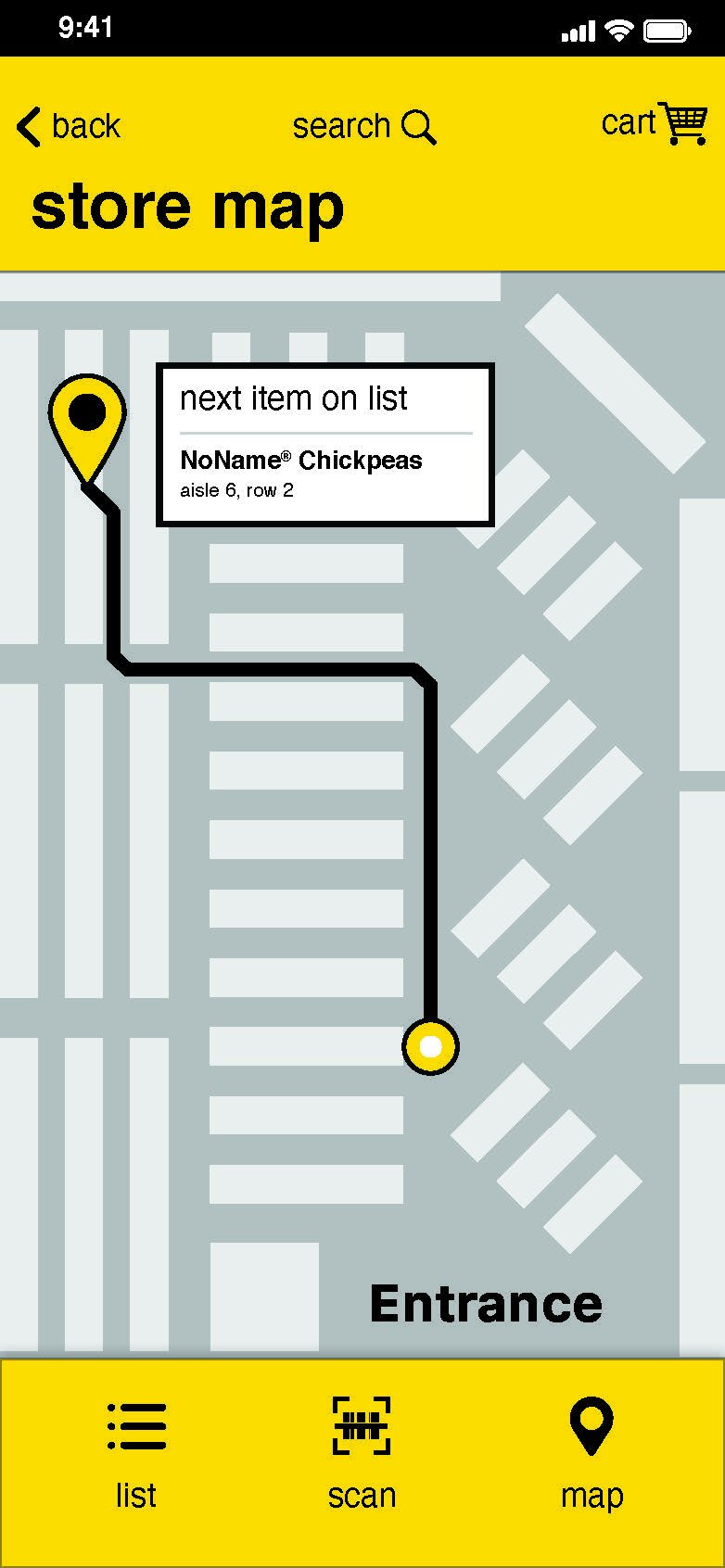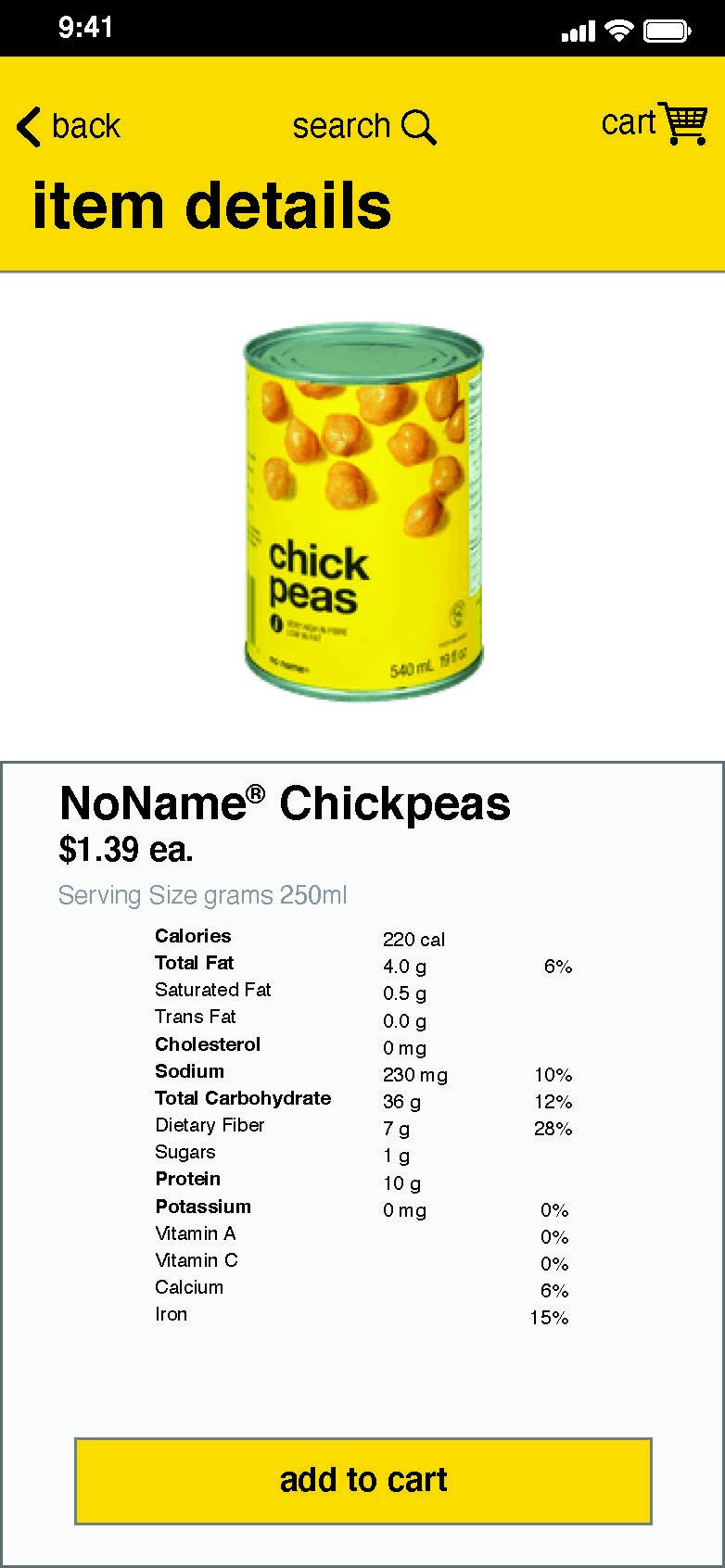Self-Scan Shopping App
Overview
Interface
The self-checkout machine at many grocery stores throughout the world has been a relatively recent phenomenon. The devices can be unpleasant to use, and their implications can be troubling. Are these unfeeling machines coming to take our jobs? Are we partaking in our own demise by helping to fund Skynet™?
Separated from the philosophical thought experiment, these machines are pretty terrible. They suffer from a depressingly common shortcoming of many interactions, which is that they are designed to satisfy the investors not the customers. The interaction was not designed for us, it was designed for the people who will never use it.
All cynicism aside, the machines seem to be designed for a certain mode of thinking which is not universal. Barcodes are convenient, but grocery stores will always need to stock irregular unpackaged fruits and vegetables. In our modern age of waste reduction, adding barcode stickers to fruit seems completely counterproductive. The unavoidable holdup occurs when the customer wants to buy an apple and needs to specify which of the dozen varieties of apple they have selected. This problem is obviously not limited to apples.
Goals
Self-checkout machines at grocery stores have been around for about fifteen years, yet there are still many problems with the systems. The machines were designed to be a computer replacement for cashiers. This approach has resulted in an interactive experience that frustrates many shoppers. Casual observance indicates that nearly half of users experience some issues when using the machines.
The interaction could be solved by re-assessing the fundamental goals. A cashier is a human who charges customers appropriately. It is unreasonable to have an employee follow every customer around the store and tally their purchases as they make choices. A machine will happily do all sorts of tedious tasks that a human should not be subjected to. The grocery store checkout machine could be redesigned by spreading the experience out across the shopping experience rather than simply re-inventing the human-based checkout experience.
A positive outcome will address the key problems, as I see them, and any other issues risen by interview subjects.
The slowdown caused by interface issues
Differentiating between a variety of a specific product
Ringing up an item without using barcodes
Scanning items while shopping rather than at the end
Specifics
This interaction will be a smartphone app that customers use to scan items in a grocery store with their own devices. At the end of shopping, the user will use NFC to communicate with the checkout machine.
Alternatively, the user might choose to scan their items at the end of the shopping in the traditional grocery store experience. This system would make available familiar checkout machines that incorporate photographic technology to identify items. Rather than relying on barcode scanners, more advance technology could allow the user to present items that would be identified visually rather than requiring
Research Plan
Personal experience will be a clear starting point. Friends and family will likely have helpful input as well. Most people have at least some experience shopping in a grocery store, so the target audience will be very broad. Virtually anyone could be asked to give input on the interaction.
Questions to Explore
What are the typical stress points customers face when shopping for groceries?
Observe of customers
Ask friends and family
Ask customers in stores
What issues might be created by introducing a new mobile app-based system?
Attempt to shop with an open phone
Observe other shoppers and their phone habits
How well can a smartphone identify fruits and vegetables by camera?
Research apps which make use of the camera in a similar way
Download and test apps firsthand
Should this app be tied to a specific company?
Find examples where a third-party system functions within an established retail store
Research symbiotic relationships in the business world
Are there unforeseen ways to exploit this system or potential data privacy issues?
Map out user experience in extreme detail
Research similar design solutions
Problem Statement
The purpose of this interface is to re-imagine the self-checkout experience by encouraging customers to scan their items as they shop instead of at the end. A smartphone-based app could make the experience much smoother and also reduce congestion at the checkout.
Rationale and Understanding
A smoother grocery store shopping experience
The standard food shopping trip sequence could be improved. Using the ubiquitous smartphone, users can collect items in the store and scan them as they shop. This could alleviate the wait time at the checkout, and also empower the user with more information and planning tools.
This interface will take the form of a smartphone or tablet app. It will use the camera function to scan items through cutting edge item recognition. The app will also be capable of reading a standard barcode. Detailed information will be presented about each item. At the end of the shopping, the user will interact with a checkout kiosk which needs only to communicate with their device using NFC. The user may then pay for their items with any of the options available.
Preliminary Research
Personal experience will be a clear starting point. Friends and family will likely have helpful input as well. Most people have at least some experience shopping in a grocery store, so the target audience will be very broad. Virtually anyone could be asked to give input on the interaction. Casual conversations with family members indicated everyone has opinions on this near-universal interaction. People sometimes consider the cashiers to be too chatty, slow, and embarrassing or awkward to face. On the other hand, the self-checkout is often confusing or poorly designed (in user’s opinion), and the employee is often needed to correct issues. Users seem to choose the lesser of the two frustrations.
The primary problem this interface seeks to solve is the inevitable lineup at the cashier when the store is busy. In line, customers have a tendency to voice their complaints and frustrations aloud. There is also plenty of time for customers and researchers to observe the food choices and organizational style of other store-goers. This is a clear pain point where shoppers have a negative experience.
When in line, the user is committed to a place in the sequence. Should the user remember one more item they would like to collect, they will lose their place in line. The user must decide between the desire for the item and the time wasted gathering it. While the opening of the grocery store is full of fresh flowers and fruits, the ending of the experience can be stressful and unpleasant. The less time users spend here, the more positively they will feel about the interaction.
Most users seem comfortable manipulating a smartphone app while shopping. The popularity of phone handle accessories has made the devices easier to use with one hand. Using the camera function is rather draining on the battery. Users seem to employ a wide variety of methods to keep their shopping list on their phone visible but also safe. Perhaps a phone mount could be installed on shopping carts in the future.
Talk Aloud Testing
The interface must primarily function as intended. The user will be manipulating the app while moving through a grocery store, which is full of distractions. They are likely only using one hand on their device. They will need to look away from their screen many times in short succession.
In order to judge successfulness, the screens will be printed out and displayed for research participants. They will tell the researcher their thought process and how they would interact with the screens to produce their desired results. Using this method, it will be apparent if the intended use is functional. The research will also show if there are any additional functions the user expects to see, or functions that they have little use for at all.
Interview Questions
Users participating in the talk aloud testing and users who agree to be interviewed will be asked to respond to these questions. It is hoped they might spark additional thoughts and opinions that can guide the design.
§ How do you manage your shopping list?
§ How often do you shop for groceries?
§ How many people are you shopping for?
§ Do you use your smartphone while shopping?
§ Do you prefer the self-checkout machines or the employee checkout?
§ What is your reasoning for that decision?
§ What are the biggest annoyances associated with self-checkout machines?
§ What do you think is the main reason self-checkout machines are slow?
§ How often do you need to ask an employee for assistance?
§ Have you ever cheated the self-checkout system?
§ Do you always remember to scan your loyalty card?
§ Where does the receipt print from?
§ Have you ever forgotten anything at the self-checkout?




